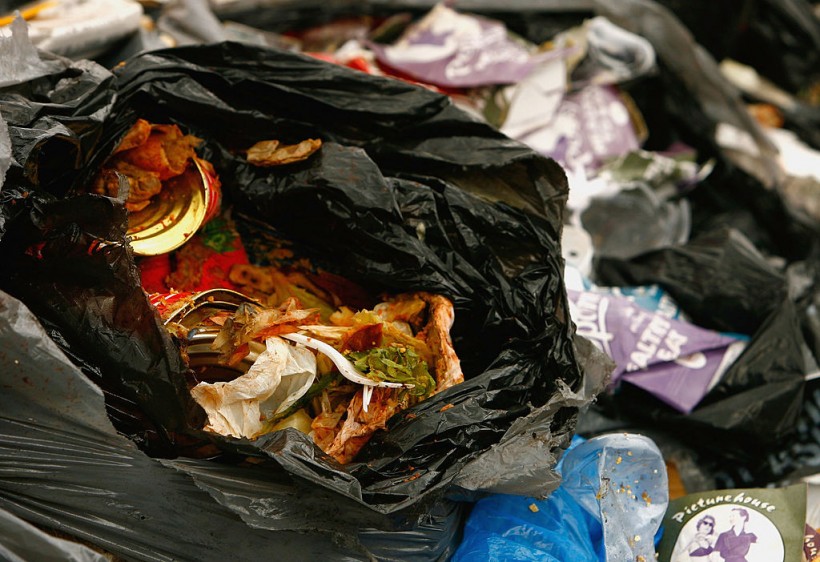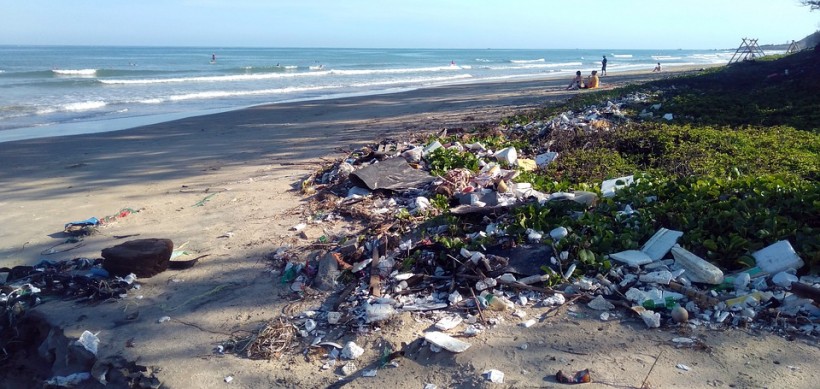Engineers at the University of Cincinnati have created a potential electrochemical system for converting pollutants from chemical and power facilities into usable goods while combating climate change.
Collaborative Effort

A days worth of rubbish festers in a heap after being collected from the city centre, May 25, 2007 of Edinburgh, Scotland. Three cages of litter are being put on display so that public can observe the scale of the amount of litter churned out by the city each day.
Jingjie Wu, an assistant professor at the UC College of Engineering and Applied Science, and his students employed a two-step cascade process to convert carbon dioxide to carbon monoxide, which was subsequently converted to ethylene, a molecule used in everything from food packaging to tires.
In partnership with the University of California Berkeley and the Lawrence Berkeley National Laboratory, the work was published in Nature Catalysis.
Tianyu Zhang, a UC College of Engineering and Applied Science graduate, led a similar study last year that looked at ways to convert carbon dioxide into methane, which might be utilized as rocket fuel for Martian exploration.
Also Read: Single-Use Packaging Actually Increases Waste From Fresh Foods
Significance
The significance of the two-stage conversion is that it may simultaneously boost ethylene selectivity and productivity while using a low-cost technique, according to Zhang.
Since the electrode structure is generic and simple, this technique may be used for various reactions.
Selectivity refers to the ability to isolate the desired molecules. The quantity of ethylene the reactor can generate is measured in productivity.
Researchers are converting carbon emissions into something regarded valuable because of its numerous downstream applications.
Steel and cement facilities and the oil and gas industry are among the businesses that may benefit, Zhang added.
We can utilize this technology to cut carbon emissions and benefit from it in the future. As a result, he claims, limiting carbon emissions will no longer be an expensive procedure.
Various Uses
Ethylene is utilized in various plastics, from water bottles to PVC pipe, textiles, and rubber used in tires and insulation, and has been dubbed "the world's most significant chemical."
Professor Wu claimrd that the chemical they make is called "green ethylene" since it is made from renewable resources.
According to Wu, they should be able to remove greenhouse gases from the environment while also producing fuels and chemicals.
Carbon dioxide is produced in large quantities by power plants and ethylene facilities.
The ojective is to use electrochemical conversion to absorb carbon dioxide and convert it to ethylene.
The process currently consumes more energy than it yields in ethylene.
Furthermore, according to Wu, UC engineers were able to increase productivity and selectivity by employing tandem electrodes, both of which are essential markers for making the process economically viable.
Containing and Converting Greenhouse Gasses
Containing and converting greenhouse gases has significant environmental benefits, Wu said.
"The administration is pushing for it. We'll need to convert carbon dioxide in the future for sustainable growth," he stated.
And according to Wu, copper isn't always the ideal catalyst for this reaction. Hence, industry experts are likely to develop other options that might enhance productivity and efficiency even more.
A Comprehensive System

Plastic trashes along the shorelines. An environmental group has warned that there would be more plastics than fishes in the ocean by 2050.
The system is comprehensive, but preferred catalysts can be used, Wu said, adding that they were able to double the performance more than even using commercial copper. With a superior catalyst, they might address the cost issue.
Last year, Wu filed a patent application for their invention.
According to Zhang, the technique would take some time to become profitable. But, he added, they have already made significant progress.
In the last ten years, technology has advanced significantly. As a result, he expects comparable advancements in the following ten years. This is a game-changer, according to Zhang.
Related Article: How Bamboos Can Help Make Modern Construction More Sustainable
For more news about making the environment sustainable, don't forget to follow Nature World News!
© 2024 NatureWorldNews.com All rights reserved. Do not reproduce without permission.

![Tsunami Hazard Zones: New US Map Shows Places at Risk of Flooding and Tsunamis Amid Rising Sea Levels [NOAA]](https://1471793142.rsc.cdn77.org/data/thumbs/full/70325/280/157/50/40/tsunami-hazard-zones-new-us-map-shows-places-at-risk-of-flooding-and-tsunamis-amid-rising-sea-levels-noaa.jpg)



